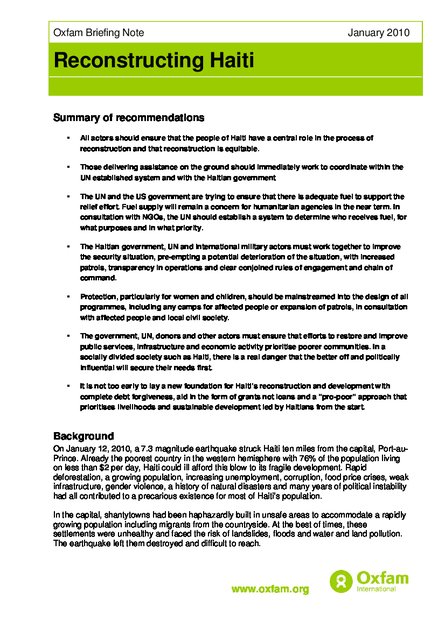
On January 12, 2010, a 7.3 magnitude earthquake struck Haiti ten miles from the capital, Port-au-Prince. Already the poorest country in the western hemisphere with 76% of the population living on less than $2 per day, Haiti could ill afford this blow to its fragile development. Rapid deforestation, a growing population, increasing unemployment, corruption, food price crises, weak infrastructure, gender violence, a history of natural disasters and many years of political instability had all contributed to a precarious existence for most of Haiti’s population. In the capital, shantytowns had been haphazardly built in unsafe areas to accommodate a rapidly growing population including migrants from the countryside. At the best of times, these settlements were unhealthy and faced the risk of landslides, floods and water and land pollution. The earthquake left them destroyed and difficult to reach.
Oxfam has been working in Haiti since 1978. We have focused on supporting communities and local government in sustainable livelihoods, disaster risk reduction, good governance and humanitarian assistance. In response to the earthquake, Oxfam is providing life-saving water and sanitation, working closely with other organisations to ensure that assistance is well-coordinated. We are also supporting local organisations with which we have a long-term relationship to assess and respond to the humanitarian crisis in other affected areas.
